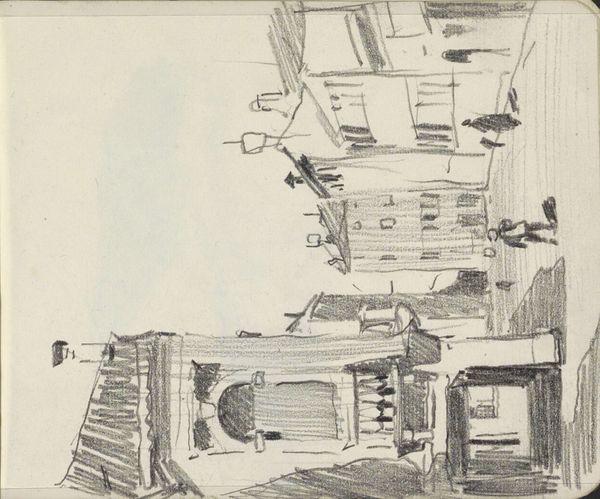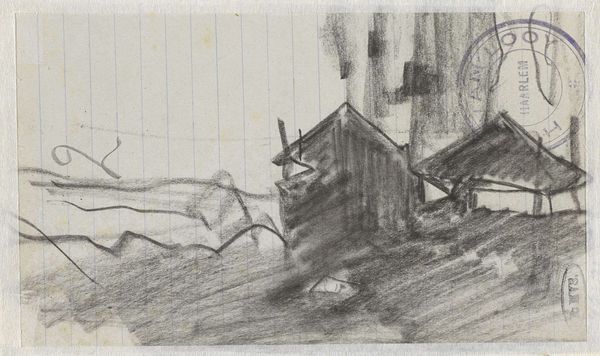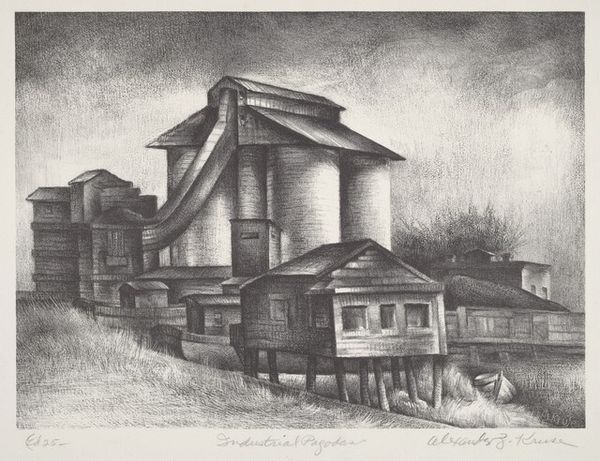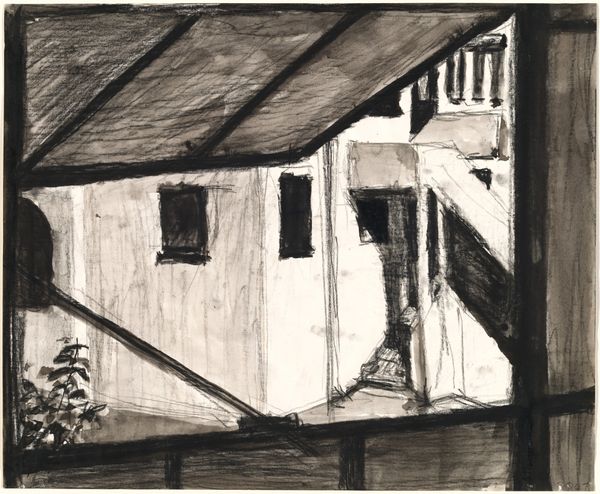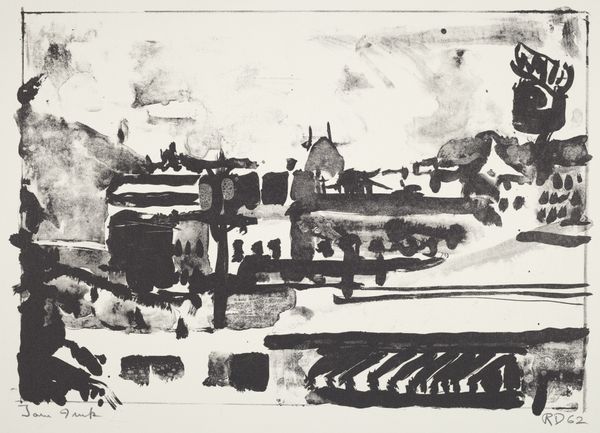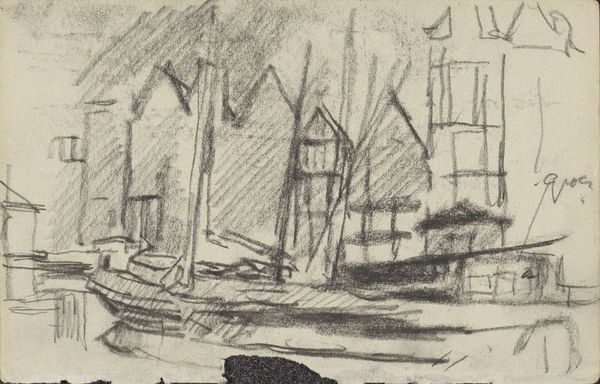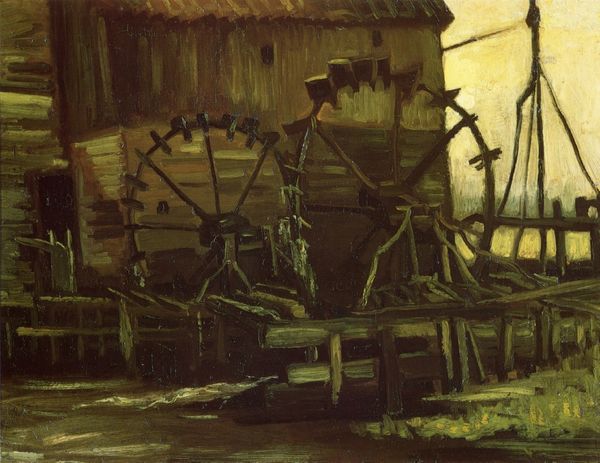
Dimensions: 15 × 20 1/16 in. (38.1 × 51.0 cm)
Copyright: Public Domain
Curator: This charcoal drawing, simply titled "Corner," was created by Isobel Bates in 1941. There's a quiet drama in its rendering of the urban landscape, isn’t there? Editor: Definitely a melancholic mood, isn't it? It feels stark and almost claustrophobic despite being an outdoor scene. The sharp angles and dense blacks contribute to this oppressive atmosphere, and I am already questioning what message the artist may have wanted to convey. Curator: Well, Bates employed charcoal to create strong contrasts and textures. Notice how she renders the architecture with an almost brutal simplicity; the textures speak to me of resilience. She seems concerned with process of construction of this type of building or urban design. Editor: Absolutely. Thinking of the time, 1941, America was on the cusp of entering World War II. Cityscapes often reflect not just the physical reality of urban environments, but the psychological states of their inhabitants. This starkness and bleakness here read as anxiety and perhaps a premonition of societal upheaval, this also evokes themes related to economic disparity or social decay within urban areas. Curator: It also makes me wonder, where did she source this particular charcoal? Was it mass produced or hand made? The Ashcan school from which the drawing seemingly stems, elevated humble materials in their depiction of the mundane—and there's a radical equality implied in the drawing. How would one value coal miners? Did Bates have access to mass-manufactured artist's charcoals or source something locally that maybe a lower-income area person provided? It seems clear there’s social commentary baked into the media itself. Editor: That's a fascinating point, linking the material to social strata. For me, that looming darkness and that starkly rendered traffic light really resonate with a broader narrative of urban alienation, typical of modernist discourse. Bates has not shied away from commenting about inequality. She really made use of what tools were around her, what were provided, what she could find, or could access. Curator: Isobel Bates offers an interesting case study. The image reflects that production techniques play a critical role in how we perceive both her materials and, frankly, ourselves. This work provides interesting avenues into social issues around both resources and income. Editor: "Corner," really forces us to think critically about not only the scene that it shows, but of that intersection's greater implications during a pivotal time in American and global history.
Comments
No comments
Be the first to comment and join the conversation on the ultimate creative platform.


